By Peter Clothier
“The Laguna Canyon Project: Refining Artivism,” by Mark Chamberlain
Laguna Wilderness Press
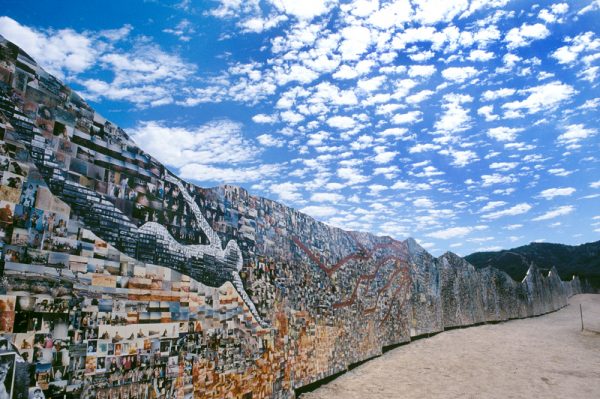
I wonder how many of us living in Laguna Beach today are aware of the debt of gratitude we owe two artists who have now left us? In their three decades-long Laguna Canyon Project, Jerry Burchfield, who died in 2009, and Mark Chamberlain, who passed away only recently, had the vision and persistence to inspire a community movement that succeeded in protecting the precious—and still vulnerable!—greenbelt that separates us, precariously, from development. The surrounding suburban sprawl continues to encroach, but the bulwarks created in good part by the work of these men and their many supporters are today still in place. Who among us has not experienced the delight, the relief, of driving the nine miles of Laguna Canyon that separate the nightmare of the freeways from the great expanse of the Pacific Ocean?
Together with his partner, Liz Goldner, Mark Chamberlain had the foresight to devote the last four years of his life to a documentation of this dedicated, indeed exemplary struggle to preserve our natural heritage. Consider “The Laguna Canyon Project” his last gift to the community. His own long essay forms the core of the book. It is an important historical document, and not only for tiny Laguna Beach: it offers a model for the way in which the vision of artists can extend far beyond the studio and affect the lives of a multitude of people and the endangered planet that we all inhabit. Combining art with social activism, “artivism” is Chamberlain’s word for an aesthetic that should inspire every artist, every writer, who asks him- or herself in justified despair, in these challenging times: what can I do to make a difference? It demonstrates that even one individual—in this case, two, both photographers—can indeed do something.
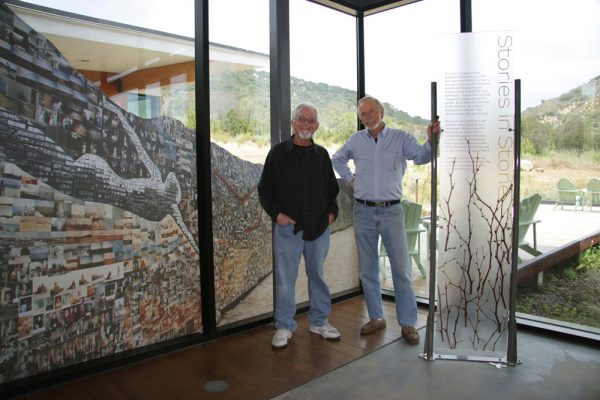
The project started out with great ambitions but very modest means, as a collaborative, foot-by-foot, yard-by-yard photo-documentation of those precious nine miles. Like all artworks—the whole project, in its entirety, can surely be viewed as one single artwork—it grew organically. Shakespeare’s Hamlet put it nicely: “by indirections find directions out.” One thing led to another, one idea to the next, until the project spanned 16 separate but related “phases” that were created between April1980 and June 2010.
“The Tell,” of course, is the best known and the most ambitious of those phases. Erected in 1989 in the Sycamore Flats area of Laguna Canyon, it was a deliberate effort to halt plans for the Irvine Company’s Laguna Laurel housing project, which would have been a foot in the door that could open the entire canyon to development. “The Tell” was a multi-media extravaganza. Described, rather modestly, as a “photo-mural,” it was in fact a monumental sculpture that incorporated not only photography, the medium favored by both Chamberlain Burchfield, but also the kind of land art pioneered in recent years by artists like Robert Smithson and Michael Heizer, and a good measure of performance art. In its structure and its visual motifs, it embraced every aspect of the canyon’s peculiar identity: its archeology and history, its topography, its plant and animal life, its geology. Mirroring the horizon of the surrounding hills, the outline of “The Tell” suggested a reclining female form, the figure of Mother Earth, perhaps, that it intended to protect from human vandalism.
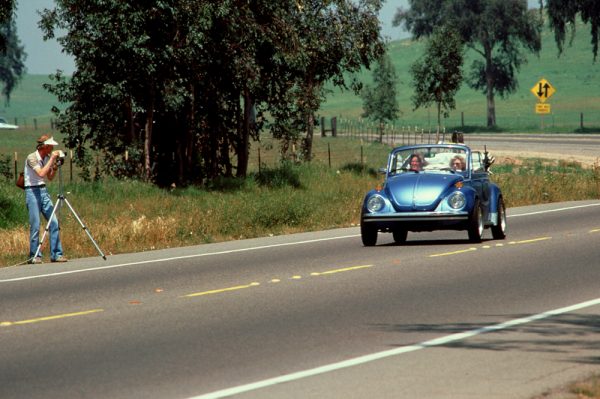
Like the international work of the artist Christo and his wife Jeanne-Claude, moreover, “The Tell” was a pioneering example of what has come to be identified as “social practice”—the kind of art that addresses issues of importance to the public and engages the civic bureaucracy and the political establishment as a part of its process. As Chamberlain describes the two-year process of creating this project in his important essay, there were planning sessions to attend, city and other local ordinances to be complied with, legal complications to be solved, bureaucratic objections to be overcome, public awareness to be raised, and significant financial support to be solicited. In the daunting construction phase, the artists relied on the enthusiastic volunteer help of the Laguna Beach community. And, once constructed, “The Tell” attracted the active participation of thousands of local residents in the form of a protest march that led all the way from the city to the site half way up the canyon. It was thanks in part to this impressive turnout that the Irvine Company decided to cancel its housing project—and the canyon was saved.
The phases of the Laguna Canyon Project were documented in a wide-ranging 2015-2016 exhibition at Laguna Art Museum, and now their story is available in the form of this new publication. Rich in photographic documentation and with texts by a number of those involved with the project at the time— Larry Agran, Paul Freeman, Mike Phillips and Leah Vasquez—the book is an engaging and invaluable resource, and a timely reminder that artists can make a difference. It is also a fitting legacy for Mark Chamberlain and his friend and collaborator, Jerry Burchfield, and a tribute to their commitment to the protection of this one small corner of our planet. May it prove inspirational to those who share their sense of purpose and their vision.
The author has been writing about art and books for national magazines for many years. Based partly in Los Angeles, he is also a 24-year part-time Laguna Beach resident. His blog, The Buddha Diaries, enjoys an international readership.
Editor’s Note: A memorial service for Mark Chamberlain is set for 2 p.m. Sunday, June 3, at Neighborhood Congregational Church, 340 St. Ann’s Dr. His book can be ordered from Laguna Wilderness Press, purchased at Laguna Beach Books or the Festival of Arts bookshop.


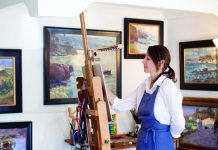
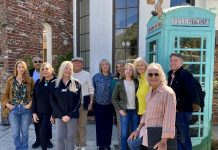

Magnificent social mural and very informative read!